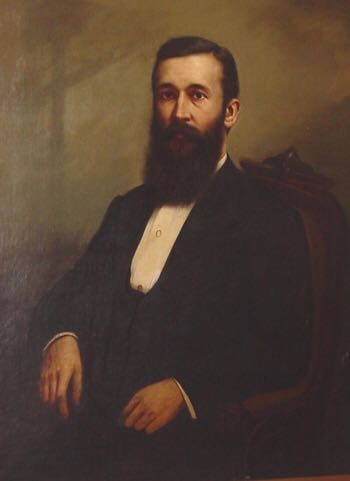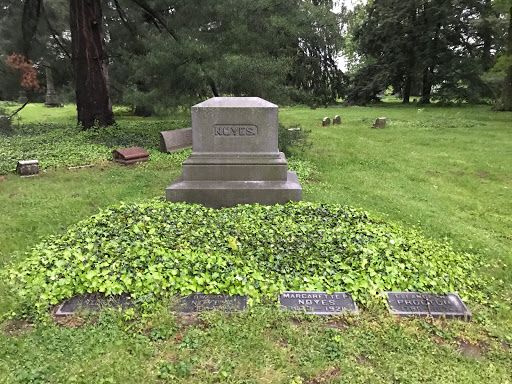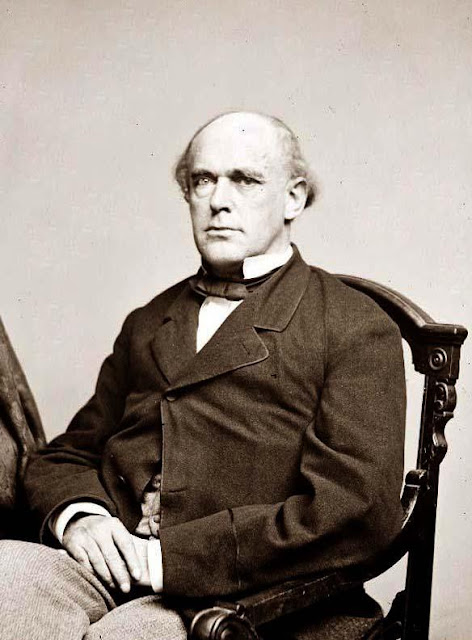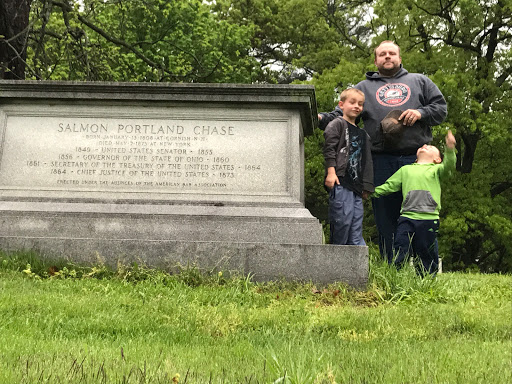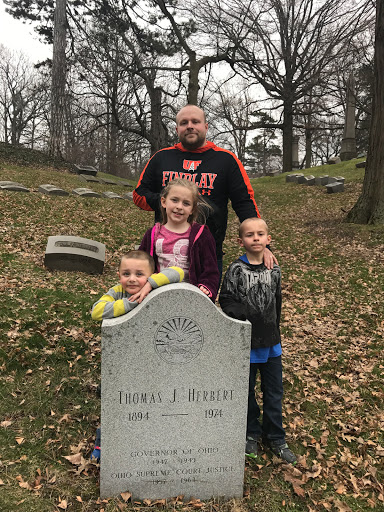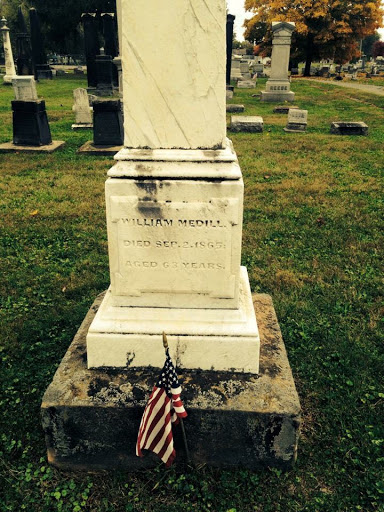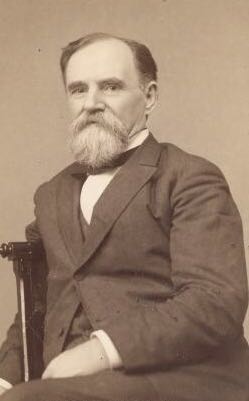 |
| Charles Foster |
Born: April 12, 1828
Died: January 9, 1904
Political Party: Republican
Term of Office: January 12, 1880 - January 14, 1884
Buried: Fountain Cemetery Fostoria, Ohio
16 of 56
Charles Foster was born in Seneca County, Ohio in 1828. When he was young his father opened a store that would grow to be very successful. Foster's education was limited as he was required to stay at home and work in the family store as his father experienced health problems. At the age of 18, Foster became a partner in the family store. In 1854, when 2 nearby towns merged into 1. The new community was named Fostoria in honor of the Foster family. I thought that this was interesting since Fostoria is well known to me. It's only about a half hour from where I grew up and my Mom actually worked in a factory there for 30 years.
When the Civil War broke out Foster did not join the military. Instead he helped the war effort in other ways like recruiting and he became well known for his generosity in extending lines of credit to families of deployed Union soldiers.
Foster entered politics in 1870 when he was elected to the U.S. House of Representatives. He would serve 4 - 2 year terms in Congress before loosing reelection in 1878. Along the way he supported the successful Presidential campaign of Ohio Governor Rutherford B. Hayes.
Foster ran for Governor of Ohio in 1879 and won. As Governor he worked on making the state government run more efficiently. He won reelection in 1881, but his support of the temperance movement and raising taxes on liquor caused him to loose reelection to a 3rd term in 1883.
Political Party: Republican
Term of Office: January 12, 1880 - January 14, 1884
Buried: Fountain Cemetery Fostoria, Ohio
16 of 56
Charles Foster was born in Seneca County, Ohio in 1828. When he was young his father opened a store that would grow to be very successful. Foster's education was limited as he was required to stay at home and work in the family store as his father experienced health problems. At the age of 18, Foster became a partner in the family store. In 1854, when 2 nearby towns merged into 1. The new community was named Fostoria in honor of the Foster family. I thought that this was interesting since Fostoria is well known to me. It's only about a half hour from where I grew up and my Mom actually worked in a factory there for 30 years.
When the Civil War broke out Foster did not join the military. Instead he helped the war effort in other ways like recruiting and he became well known for his generosity in extending lines of credit to families of deployed Union soldiers.
Foster entered politics in 1870 when he was elected to the U.S. House of Representatives. He would serve 4 - 2 year terms in Congress before loosing reelection in 1878. Along the way he supported the successful Presidential campaign of Ohio Governor Rutherford B. Hayes.
Foster ran for Governor of Ohio in 1879 and won. As Governor he worked on making the state government run more efficiently. He won reelection in 1881, but his support of the temperance movement and raising taxes on liquor caused him to loose reelection to a 3rd term in 1883.
After returning home, Foster served as President of the Northwestern Ohio Natural Gas Company.
I visited the gravesite of Governor Charles Foster on January 15, 2012. I had really been enjoying updating all these blogposts on Governor gravesites in the previous few days. I really wanted to start getting more of them. By far the closest Governor gravesite to where I live is Charles Foster in Fostoria. I have driven through Fostoria many times over the years and have never stopped to find Governor Foster. So after church I made the 15 minute drive over to Fostoria from Findlay and got another Governor gravesite.
Foster reentered politics in 1891 when President Benjamin Harrison chose him as his Secretary of the Treasury. He remained in that position until the end of Harrison's administration.
Throughout the course of his life, Foster expanded his vested interest beyond his family store. These investments included oil, railroads, rubber and mining.
In January 1904, Foster was visiting a friend in Springfield, Ohio. He intended on attending the inauguration of Governor Myron T. Herrick in a few days. But he passed away unexpectedly through the night on January 9, 1904.
When I read the story it seemed familiar. I am currently going through and expanding on some of these older pages. One of the more recent Governor gravesites that I have visited is the gravesite of Asa Bushnell in Springfield.
Foster died in Springfield a few days before Herricks Inauguration. Bushnell was from Springfield, he attended Herricks Inauguration, but took sick afterwords and died in Columbus a few days later. I guess it was an eventful
week in Ohio Governor history.
I visited the gravesite of Governor Charles Foster on January 15, 2012. I had really been enjoying updating all these blogposts on Governor gravesites in the previous few days. I really wanted to start getting more of them. By far the closest Governor gravesite to where I live is Charles Foster in Fostoria. I have driven through Fostoria many times over the years and have never stopped to find Governor Foster. So after church I made the 15 minute drive over to Fostoria from Findlay and got another Governor gravesite.

|
| When you enter Fostoria you see these historical markers noting that Charles Foster lived here |

|
| Foster family gravesite Fountain Cemetery Fostoria, Ohio |

|
| Governor Fosters individual marker |

|
| Charles Foster and I |







